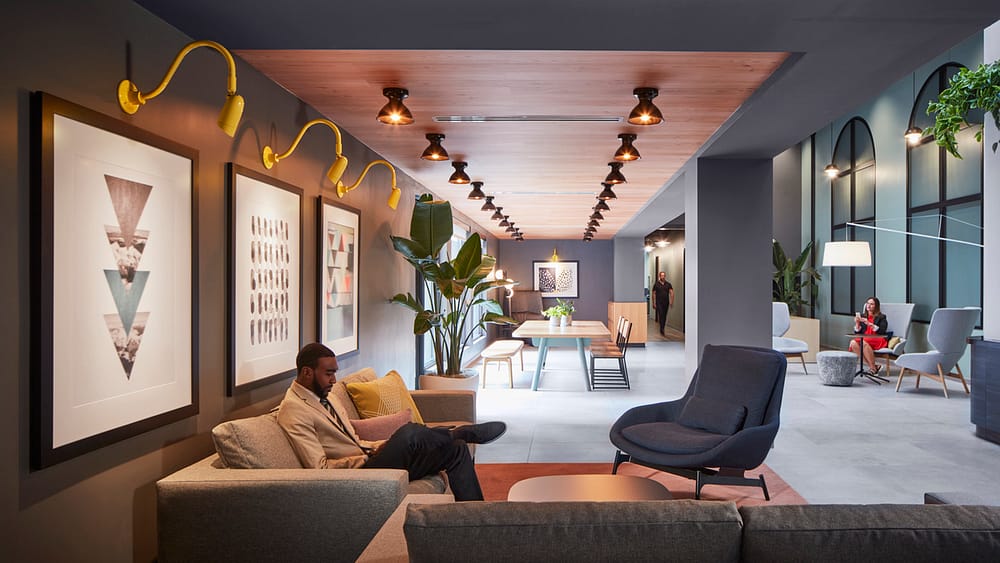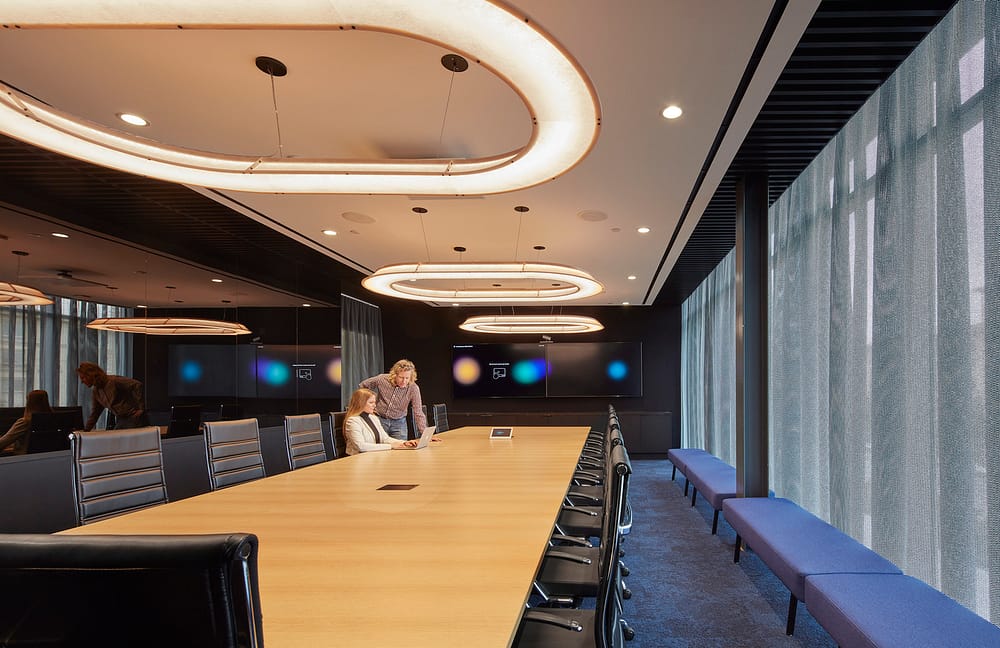Designing with Original Artwork | IA Interior Architects
Whether created or curated by the IA Experiential Design team, original works of art can significantly enhance the experience of a space. While some of our clients have private collections they want featured in traditional or creative ways, others aim to commission or purchase art for a variety of reasons—to inspire; infuse excitement or a local vibe into the workplace; increase brand awareness; or make an aesthetic statement. As designers, we draw on many sources and work in a variety of ways to achieve those objectives for our clients.

Sourcing Artwork
More than ever our clients want to interact with the community, so we often partner with an art consultant connected to local creatives, which is what we did to identify regional, diverse artists for the TIAA Charlotte campus renovation. For other clients, locally-celebrated street artists are an appealing option, particularly as
